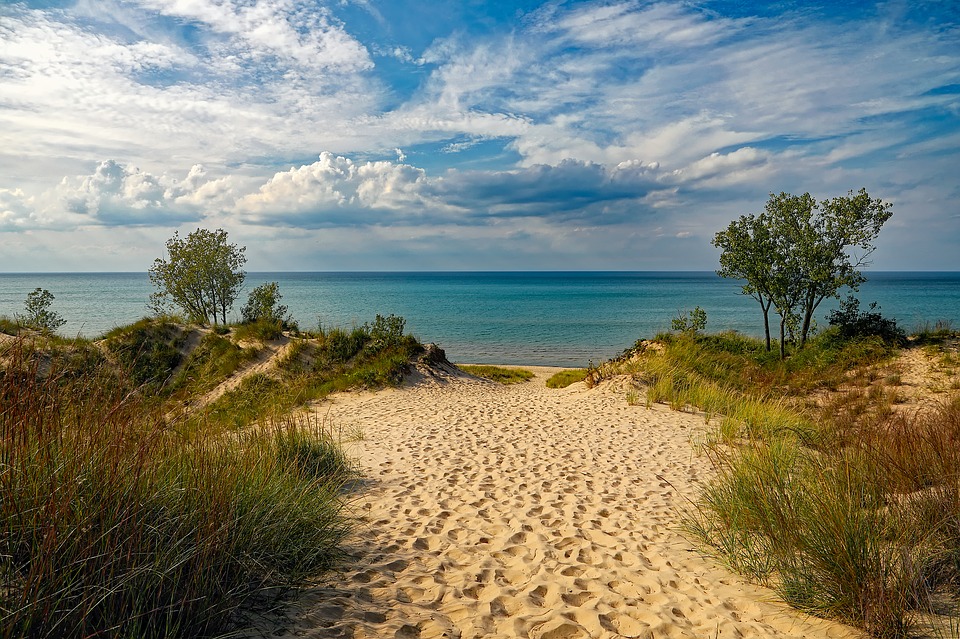
Communities are implementing nature-based solutions to minimize flooding, erosion, and runoff and provide additional benefits such as recreation, habitat, and clean water. Nature-based solutions include existing natural areas and engineered solutions that mimic natural processes. Below are key Digital Coast resources useful for communities considering nature-based solutions to enhance their coastal resilience.
Understand the Issue
-
Tool
Coastal Flood Exposure Mapper
Map people, places, and natural resources exposed to coastal flooding. Use the information to start community conversations about risk reduction strategies.
-
Tool
Sea Level Rise Viewer
Use the “marsh migration” tab to see how wetlands in your area are impacted by sea level rise. Watch the tutorial to see how to get the most out of this powerful information resource.
-
Tool
Lake Level Viewer (U.S. Great Lakes)
View lake level changes in the Great Lakes to see potential shoreline and coastal impacts to help make land use decisions.
-
Tool
Land Cover Atlas
Use land cover data (available for download) to map natural areas and explore the atlas to see how it’s changed over time. Access more land cover resources here.
Learn the Basics
-
Training – Interactive Module
Nature-Based Solutions for Coastal Hazards: The Basics
Learn an approach to identifying your community’s coastal hazard issues, how nature can help reduce impacts, and nature-based solutions that provide critical benefits.
-
Training – In-person and Virtual Course
Nature-Based Solutions for Coastal Hazards
Attend in-person or virtual training to discuss nature-based solutions important in your community and implementation steps, and hear from local experts in the field.
-
Training – Quick Reference
Nature-Based Solutions: Benefits, Costs, and Economic Assessments
Use these three quick references to gain information about green infrastructure practices and benefits, installation and maintenance costs, and tips for assessing the costs and benefits.
-
Training – Video
Green Infrastructure Protective Services
Watch a short animation describing the protective benefits of green infrastructure. This is a useful outreach tool.
-
Training – Quick Reference
Measures for Shoreline Stabilization
Get information on a continuum of green to gray shoreline stabilization techniques that can help reduce coastal risks.
Dig Deeper
-
Training – Interactive Module
Green Infrastructure Effectiveness Database
Discover literature documenting the effectiveness, as well as cost and benefits, of various green infrastructure techniques.
-
Training – Interactive Module
Green Infrastructure Mapping Guide
Use this guide to develop a GIS work plan to prioritize nature-based solutions (green infrastructure).
-
Training – Publication
Assessing Green Infrastructure Costs and Benefits
Discover this six-step process for analyzing green infrastructure techniques in terms of cost versus benefits.
Learn from Others
-
Training – Virtual Course
Advancing Coastal Resilience through Nature-Based Solutions
Participate in webinars (or access recordings and associated resources) that bring experts together to discuss ideas, approaches, successes, and challenges in implementing nature-based solutions.
-
Training – Case Study
A Community Works Together to Restore the Floodplain and Reduce Damages
See how a community engagement approach is helping this village restore the natural floodplain and reduce flooding impacts.
-
Training – Case Study
Dynamic Revetments Provide a Nature-Based Approach to Control Erosion in High Wave Energy Environments
Learn how dynamic revetments are being used in high wave energy locations to reduce erosion.
Additional Resources
- Handout
- Nature-Based Solutions Fast Facts
- NOAA’s Living Shorelines Website
- More Digital Coast Nature-Based Solutions Learning Resources
For additional information on NOAA’s living shorelines, habitat restoration, and coral restoration work, see NOAA’s Living Shorelines Inventory, NOAA’s Coral Reef Conservation Program, and NOAA’s Office of Habitat Conservation.
